When you first start the campaign in Salt and Sacrifice, you’ll be asked to design your character. Likewise, you’ll choose an archetype that determines your initial equipment and perks. Here’s our Salt and Sacrifice class guide to help you with the starting options, with a special emphasis on the Sage class.
Note: For more information, check out our Salt and Sacrifice guides and features hub. You can also take a look at our leveling/skill points guide.
Salt and Sacrifice class guide – The best starting class and the Sage build
Salt and Sacrifice has eight starting classes for you to choose from. As mentioned earlier, your decision here will determine the equipment and perks of your character:
| Class | Stat Focus | Starting Weapons | Perk 1 | Perk 2 | Perk 3 |
| Assassin | Dexterity (Dex) Willpower (Will) | Hunter’s Daggers Throwing Knives | Tier 1 Twindaggers +1 Will | Tier 1 Darkblade/Throwing Daggers +1 Will | +2 Dex |
| Cleric | Conviction (Cnv) Resolve (Res) | Runed Mace Wooden Crossbow | +1 Res | Tier 1 Glyphreader +1 Cnv | +1 Res |
| Fighter | Strength (Str) Endurance (End) | Knight’s Vanguard Throwing Axe | Tier 1 Heavy Armor +1 End | Tier 1 Vanguard +2 Str | +1 End |
| Duelist | Dexterity (Dex) Luck | Steel Rapier Sturdy Crossbow | Tier 1 Crossbows +1 Luck | Tier 1 Rapiers +1 Dex | +1 Dex |
| Highblade | Dexterity (Dex) Willpower (Will) Vitality (Vit) | Steel Blade Wooden Shortbow | Tier 1 Highblade +1 Dex | +1 Vit | +1 Will |
| Paladin | Conviction (Cnv) Vitality (Vit) Endurance (End) | Palatine Vanguard Throwing Axe | Tier 1 Heavy Armor +1 End | Tier 1 Glyphreader +1 Cnv | +1 Vit |
| Ranger | Dexterity (Dex) Endurance (End) | Hunter’s Cross Spear Hunter’s Shortbow | Tier 1 Halfspear +1 Dex | Tier 1 Shortbow +1 Dex | Tier 1 Light Armor +1 End |
| Sage | Arcana (Arc) Resolve (Res) | Iron-Band Stave Channeling Rod | Tier 1 Stave +1 Arc | Tier 1 Banereader +1 Arc | Tier 1 Channeling Rod +1 Res |
What do all those stats mean?
To keep things simple, think of these as your offensive stats: Strength, Dexterity, Arcana, Conviction, and, to an extent, Luck (which also affects item drop rate). Various weapons that you obtain in Salt and Sacrifice will scale based on these attributes.
The rest are mostly support stats: Vitality (health), Willpower (stamina), Resolve (focus/mana), and Endurance (carry weight). While you can put a few points into the support/utility stats, it’s still easier to manage classes or builds that focus on a specific offensive attribute that increases your DPS.
How about hybrid classes or weapon loadouts?
To be fair, you’re able to branch out and create a hybrid class later on. But, my advice is to simply stick to what works for you or what you’re comfortable with due to the leveling system and skill tree structure.
For example, you can see the Ranger’s three starting perks in the image below. The closest nodes are primarily for Dexterity boosts, and many are tied to weapon tiers that can be equipped (i.e., Halfspear, Dagger, Glaive, Rapier, Highblade, and Shortbow). Can you eventually grab nodes for Strength or Strength-type weapons? Yes, but they’re on the opposite end of the skill tree.
How about magic?
Magic or spellcasting in Salt and Sacrifice is tied to weapons that have skills known as Runic Arts. These come in two flavors: Glyphreader and Banereader. The Cleric and Paladin have Glyphreader (tier 1) unlocked as they focus on Conviction. The Sage, meanwhile, has Banereader unlocked due to the Arcana focus.
Class role summary
Knowing the above, here’s a summary of what you can expect from the classes in Salt and Sacrifice:
- Pure STR tanking role – Fighter
- Tanky with some magic – Paladin
- Speedy attacks with DEX – Assassin, Highblade, or Ranger
- Pure ARC caster – Sage
Using the Sage class in Salt and Sacrifice
That brings us to the Sage class in Salt and Sacrifice, which is what I used for most of my playthrough. Although you won’t be as tanky as the other classes (it’s gonna be a chore to increase your Endurance just to wear heavy armor), you can make up for it with nuking capabilities.
It’s fairly straightforward, as you just need to rely on Arcana and Resolve. While early-game weapons are somewhat mediocre, you should eventually obtain equipment that has decent Arcana scaling.
An example of a weapon you can grab later in the game is the Stave of Scrolls, the materials for which are dropped by the Bibliomancer. The basic spell, with Banereader (tier 3), sends out a barrage of shards.
Compared to most other spells, all of these projectiles will hit a target, causing massive damage in a short span of time. With a very low cost of 3 MP, it can be spammed to annihilate bosses with impunity.
Salt and Sacrifice is available via the Epic Games Store. For more information, check out our guides and features hub.


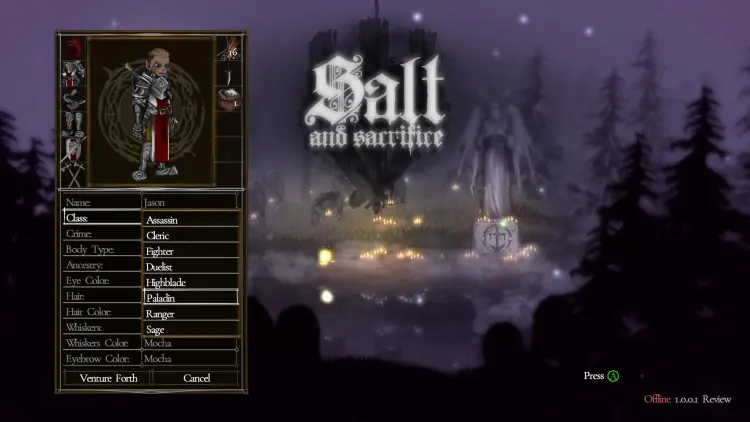
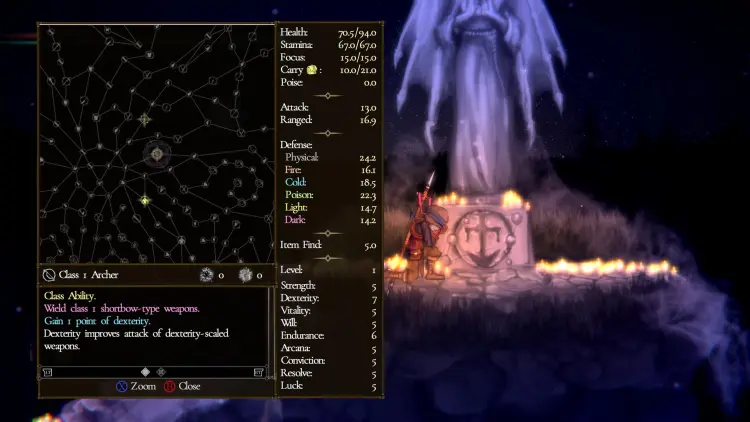
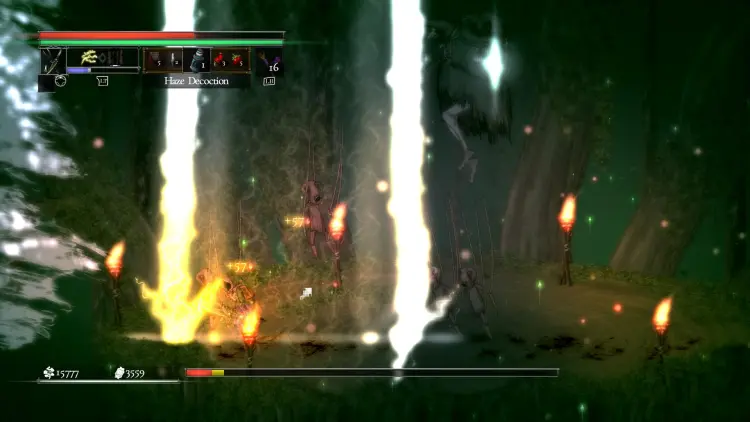
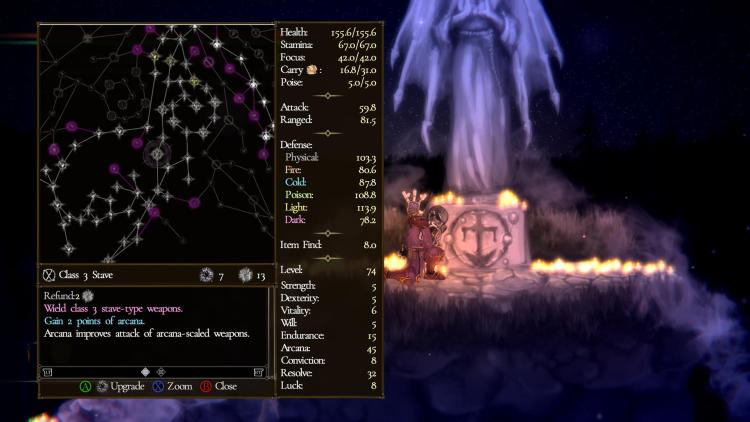
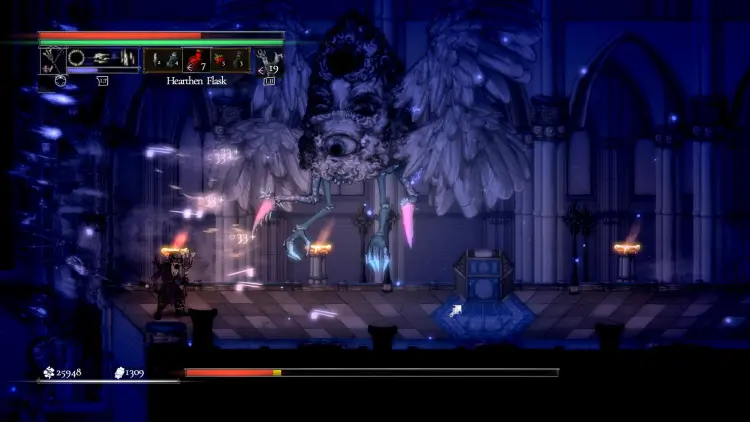




Published: May 12, 2022 09:25 pm